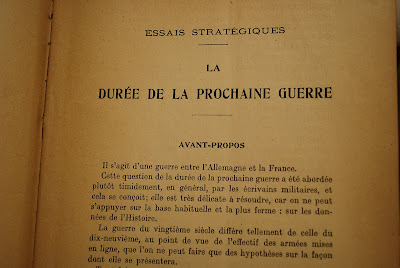There are numerous books on the American Civil War in the Chicksands Collection, written from both sides of the conflict. One of these is entitled
Confederate view of the treatment of prisoners compiled from official records and other documents, by Rev. J. William Jones, D.D., Secretary Southern Historical society – published in Richmond Va by the Society in 1876.
The Chicksands copy is inscribed on the fly leaf:
Sir Henry Tyler, with compliments of J. Wm. Jones. Secy. S.H.S. Richmond Oct 2nd 1877According to an article by David S. Williams in the Georgia Encyclopedia, Jones (1836-1909) was known as "the evangelist of the Lost Cause". Jones, a native Virginian, belonged to the first class of the Southern Baptist Theological Seminary and was ordained in 1860. During the war “the fighting parson” helped form the Chaplains Association of the Army of Northern Virginia, and served troops under Generals A. P. Hill, Thomas "Stonewall" Jackson, and Robert E. Lee, with whom he had personal friendships.
After the war Jones became embroiled in Lost Cause apologetics, arguing that the South had waged a just and holy war, and that the Confederacy produced "the noblest army . . . that ever marched under any banner or fought for any cause in all the tide of time." He held the powerful position of secretary-treasurer of the Southern Historical Society for more than a decade (1875-87) and edited fourteen volumes of the society's Papers, the major organ for the dissemination of Lost Cause ideology.
In his final years Jones lectured and preached widely. His standard prayer opening wedded his two passions: "Oh, God! Our God, our help in years gone by, our hope for years to come—God of Abraham, Isaac, and Jacob, God of Israel, God of the centuries, God of our fathers, God of Jefferson Davis, Robert Edward Lee, and Stonewall Jackson, Lord of hosts and King of kings."
Jones’ connection with Tyler is problematic; the two men seem to have nothing in common but Tyler himself is an interesting figure with a Canadian connection.
Sir Henry Whatley Tyler (1827-1908) was a railway man, rising to the position of Inspector of Railways and Company director before turning to politics, sitting as a Conservative MP from 1880 to 1892. He attended the Royal Military Academy in Woolwich and joined the Royal Engineers. In 1851, at the rank of lieutenant, he assisted Henry Cole with organizing the Great Exhibition in London. Following his appointment to Chief Inspector of Railways he spent much time on travel and planning and in 1874 was in America, inspecting the Erie system. He was a member of the abortive Channel Tunnel Commission in 1875 to 1876.
Retiring from the civil service, Tyler became President of the Grand Trunk Railway of Canada in 1877, the position he held when this book, one of the many Jones compiled, was presented to him.













































 click to enlarge
click to enlarge